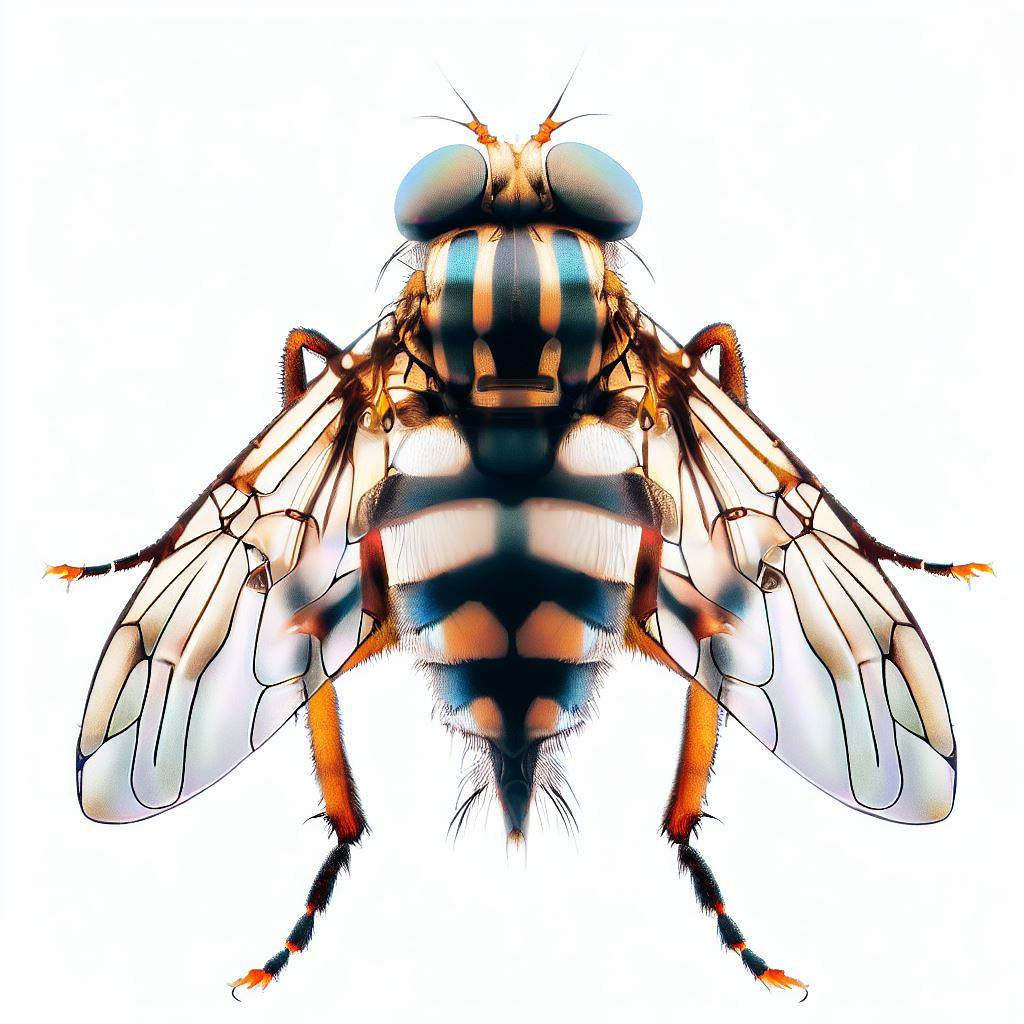
ECO-FRIENDLY PEST CONTROL INC.
Sun - Thur: 8AM - 8PM

Sun - Thur: 8AM - 8PM

Flies are a diverse group of insects that play various roles in the ecosystem but are often considered as nuisance pests. This page aims to provide valuable insights into the world of flies, including their characteristics, behavior, and the impact they have on both humans and the environment.
The life of flies is a fascinating cycle that encompasses several stages of development. Understanding their life cycle can help in better managing and controlling these common insects. Here's an overview of the life of flies:
Egg Stage: The life of a fly begins when an adult female fly lays her eggs. Flies typically lay their eggs in moist organic matter, such as decaying vegetation, garbage, or animal waste. The eggs are usually small, oval-shaped, and can be laid in clusters or individually.
Larval Stage (Maggots): After a short period, the eggs hatch into larvae, commonly known as maggots. Maggots have soft, elongated bodies and no legs. They are voracious feeders and primarily feed on decaying organic matter, helping to break it down and accelerate decomposition. The larval stage is crucial for the growth and development of the fly.
Pupal Stage: Once the maggots have completed their growth and development, they enter the pupal stage. During this stage, the maggot transforms into an inactive pupa inside a protective casing called the puparium. Inside the puparium, significant changes occur as the tissues and organs of the maggot reorganize and transform into the adult fly.
Adult Stage: After a period of time, the adult fly emerges from the puparium. The adult stage is the final and reproductive stage of the fly's life cycle. Adult flies have distinct body structures, including a pair of wings, compound eyes, and mouthparts adapted for feeding on liquid or semi-solid substances.
The lifespan of adult flies can vary depending on the species and environmental conditions. Some flies live for only a few days, while others can survive for several weeks or even months. During the adult stage, flies engage in activities such as feeding, mating, and laying eggs, continuing the cycle of life.
It's important to note that flies are highly adaptable and can reproduce rapidly, which is why they can become a nuisance and a potential health concern. Proper sanitation and pest control measures are essential for managing fly populations and reducing their impact on human environments.
Fly Habits
Flies are common insects found worldwide and are known for their distinct habits and behaviors. Understanding their habits can help in managing and controlling fly populations effectively. Here are some key habits of flies:
IUnderstanding the life cycle of flies can aid in implementing effective control strategies, such as removing breeding sites, practicing good hygiene, and using insecticides when necessary. Controlling fly populations and managing their habits requires a multi-faceted approach that includes proper sanitation, waste management, elimination of breeding sites, exclusion measures, and, if necessary, the use of insecticides. By disrupting their life cycle and preventing their reproduction, it is possible to minimize the presence of flies and mitigate the problems associated with them.